On Friday, October 30, a 7.0 Mw magnitude earthquake located 13 kilometers far from the north of Samos Island in the Aegean Sea shook the region. The event caused the tide to rise considerably, producing a small Tsunami in Greece and strong movements in Izmir, Turkey. The phenomenon has generated hundreds of disappearances and injuries, dozens of structural collapses, and just over 60 deaths in both countries.
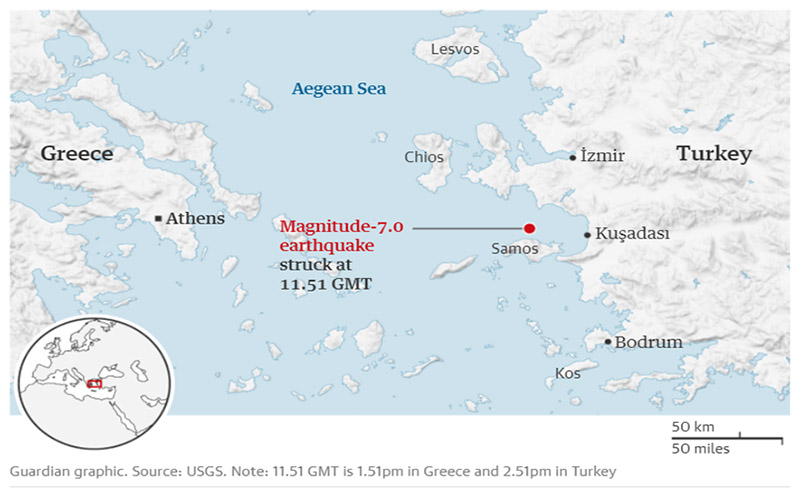
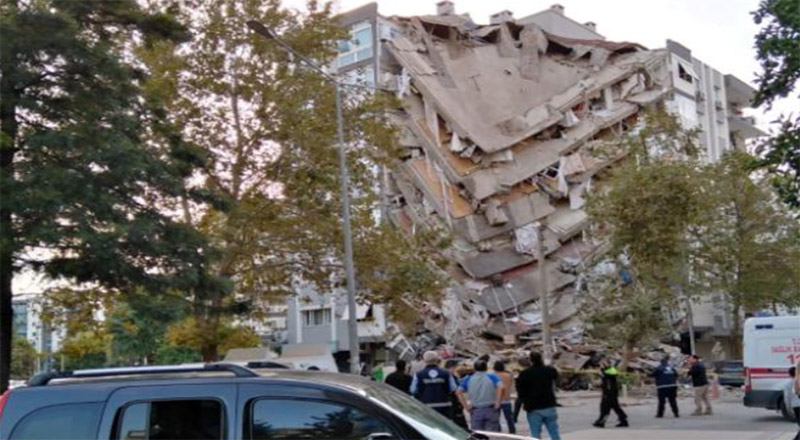
The main event was followed by more than 700 aftershocks with an average magnitude of 4.2 Mw in the subsequent 32 hours, which generated an increase in the tide and impacts on the north coast of the island of Samos.
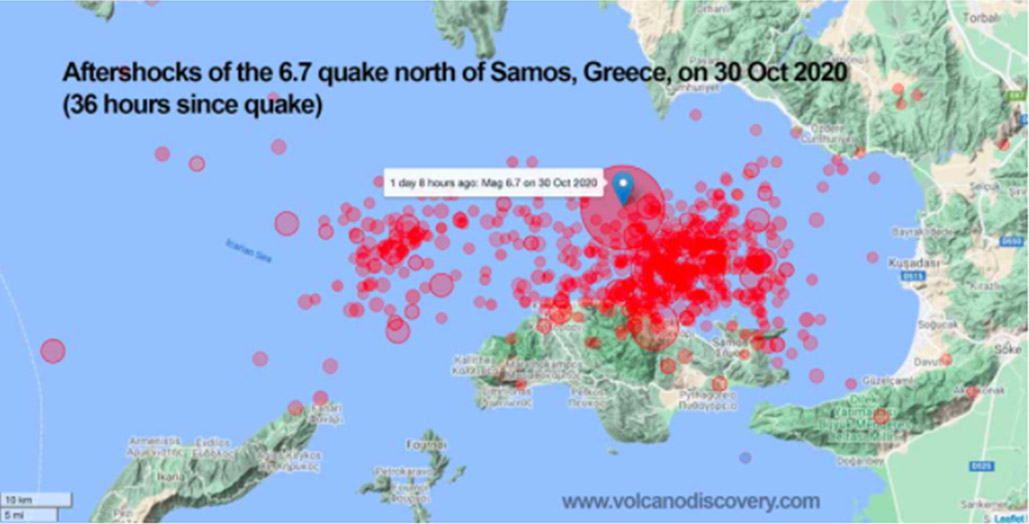
Tectonic explanation of the event
The earthquake occurred in the tectonic region of the eastern Aegean Sea located in the Eurasian plate at a depth estimated between 2 and 10 kilometers, which is why it is classified as a shallow earthquake. This event has been listed as the most devastating and largest earthquake in the area for decades. Studies have determined that the release of energy in this location was due to an extension stress along a normal fault. Additionally, the movement generated a rupture of the crust along the fault that gave rise to the Tsunami that impacted the island of Salmos.
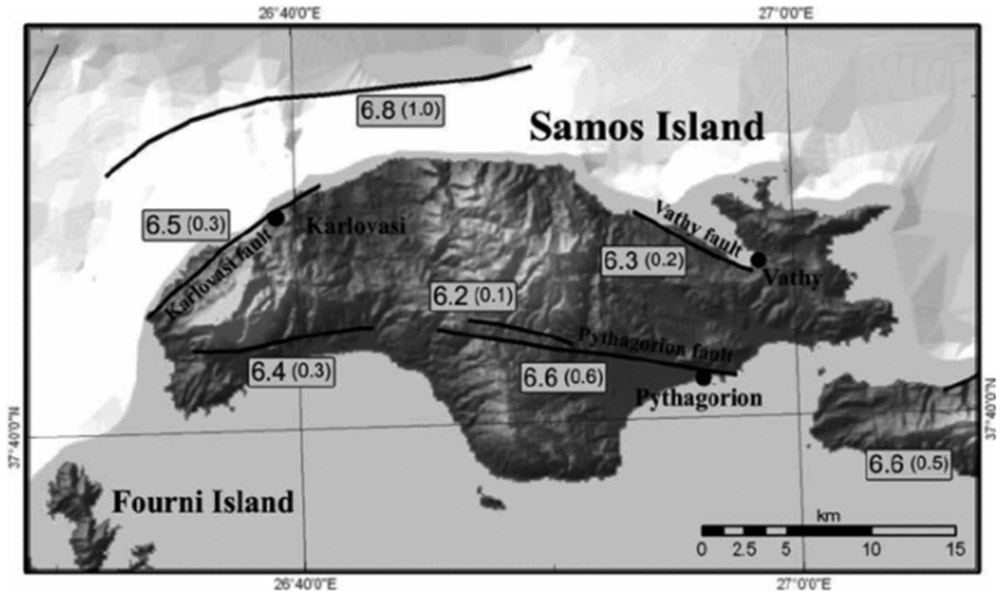
Tectonic Framework
The tectonics of the Anatolia and Aegean Sea region are quite complex. The Aegean Sea is collides at the north with the main continental plate of Eurasia, at the east with the Anatolian plate (thickest fragment of the Eurasian plate), and at the south and west with the oceanic crust attached to the African tectonic plate . The African tectonic plate subducts under the Aegean Sea plate, which in turn moves in a southwesterly direction 10 millimeters each year. As a result of this tectonic system, the Aegean landmass has been subjected to extensive stresses during the last 10 million years, thinning and dissecting through various faults that define the 'graben' or tectonic trenches and the 'horst 'or tectonic pillars of the area.
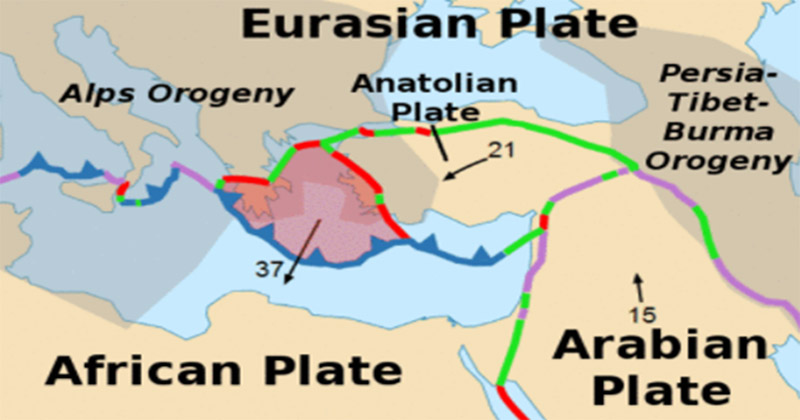
Why tsunamis occur?
Tsunamis are one of the deadliest and most dangerous phenomena in nature. They are caused by local displacements in oceanic areas produced by earthquakes, landslides, or by a notable volcanic activity. It is important to emphasize that 88% of the tsunamis registered in the global historical database have been generated by earthquakes. When an earthquake occurs in an oceanic area, it transmits a high amount of energy that generates sudden movements in the water column. However, for an earthquake to generate a tsunami, certain characteristics must be met in terms of its location, magnitude, and depth. These ideal characteristics are a depth of between 5 and 15 km in a subduction zone, and a magnitude close to or greater than 7.0 Mw. These characteristics were present in the disastrous event of October 30, 2020.
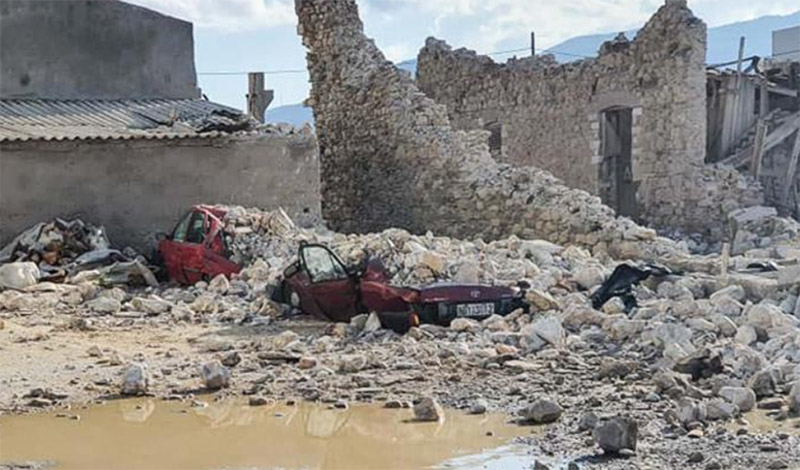
References
https://www.weather.gov/safety/tsunami-outreach
https://tsunami.gov/?page=tsunamiFAQ
https://earthquake.usgs.gov/earthquakes/eventpage/us7000c7y0/pager
https://www.volcanodiscovery.com/earthquakes/5966176/2020-10-30/11h51/magnitude7-Greece.html
https://www.nytimes.com/2020/11/01/world/europe/turkey-earthquake-rescue.html
https://edition.cnn.com/2020/10/30/europe/earthquake-greece-turkey-aegean-intl/index.html
https://www.bbc.com/news/world-europe-54770210
Related content:
Tsunamis: Be Prepared and Stay Safe!This fast draw video from NOAA explains how to prepare for and respond to a tsunami. If you live, work, or play on the coast, be prepared and stay safe! Learn more about tsunamis and tsunami safety: http://www.weather.gov/tsunamisafety |

